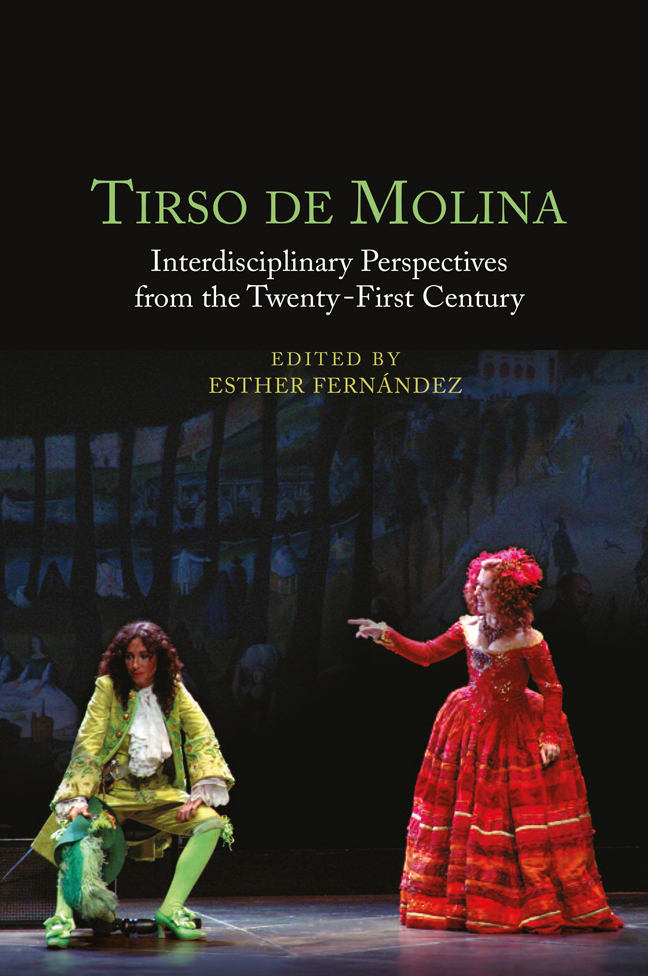16 - Tirso de Molina in English: Translation for Performance
Published online by Cambridge University Press: 02 March 2024
Summary
The Royal Shakespeare Company’s Tamar’s Revenge directed by Simon Usher in 2004–2005 came about within an emergent performance tradition of the comedia in the UK, and sparked anticipation followed by controversy among audiences and critics. As a participant observer in the season with the opportunity to view and re-view the production, every performance was painfully rich, and the extant legacy of the Stratford production’s critical reception and press coverage do not (cannot) capture the holistic theatrical experience that unfolded over the better part of two years. Questions of translation, rehearsal, design, performance, and audience prompt a re-examination of Tamar in its context of appetites vying for satiety at every level, the use of role-play, and language and versification in English and Spanish: “The RSC’s production permitted an all-too-rare opportunity to assess a professional director and cast’s ‘reading’ of a classical Spanish play against interpretations offered by scholars based almost invariably on the play’s text. It forced a reconsideration of a number of critical assumptions about Tirso’s play” (Thacker 2008: 164). Future companies and students of Tirso, hungry for the layered possibilities inherent in Tirso’s prismatic La venganza de Tamar, can learn much from Simon Usher’s exploration of the text and its performance possibilities.
When considering a dramatist’s work for production, a company often asks, “Why this play, and why now?” The first aspect of this study is to examine “Why ‘Tamar’, why then?” The second aspect under consideration is role-play and “double vision”, followed by an investigation of clues for performance found in Tirso’s verse, taking his décimas in La venganza de Tamar as the key example. Thinking like an actor, and like a director unafraid to make bold choices, can assist readers of the comedia to see more deeply into the play.
Why “Tamar”, Why Then?
The then-new artistic director of the RSC, Michael Boyd, invited RSC Associate Director, Laurence Boswell, to lead a season of plays in the Swan, the smaller theater adjacent to the main stage in Stratford-upon-Avon. Boswell directed one of the productions (Lope de Vega’s El perro del hortelano) and curated the others. The Gate Theatre, also in London, had produced a series of Golden Age plays over the course of 1990–1992.
- Type
- Chapter
- Information
- Tirso de MolinaInterdisciplinary Perspectives from the Twenty-First Century, pp. 237 - 254Publisher: Boydell & BrewerPrint publication year: 2023

